There's nothing quite as rewarding as improving the curbside appeal of your home. We know that taking on a landscaping project, though, is a big commitment. On average, then, how long does landscaping typically take? We looked into this to get you all the information that you need before starting your next big project!
For an average-sized home, a basic front yard landscaping project typically takes 2-3 days. Backyard landscaping projects tend to be more elaborate and typically take about two weeks per acre to complete. The actual amount of time it will take a contractor to landscape a patch of land will vary based on several factors, including:
- The size of the land
- The amount of foliage you want in place
- The quality of your soil
It's not just the land itself that you're contending with when you take on a landscaping project. Landscaping is an art form. You may want to go over potential designs for your lot with a professional to determine which of your ideas might provide you with the most curbside appeal.
With that in mind, let's break down all of the factors, physical and otherwise, that contribute to the amount of time a landscaping project takes so you, in turn, can develop an estimate that reflects the needs of your own project.

How Long Does Landscaping Typically Take?
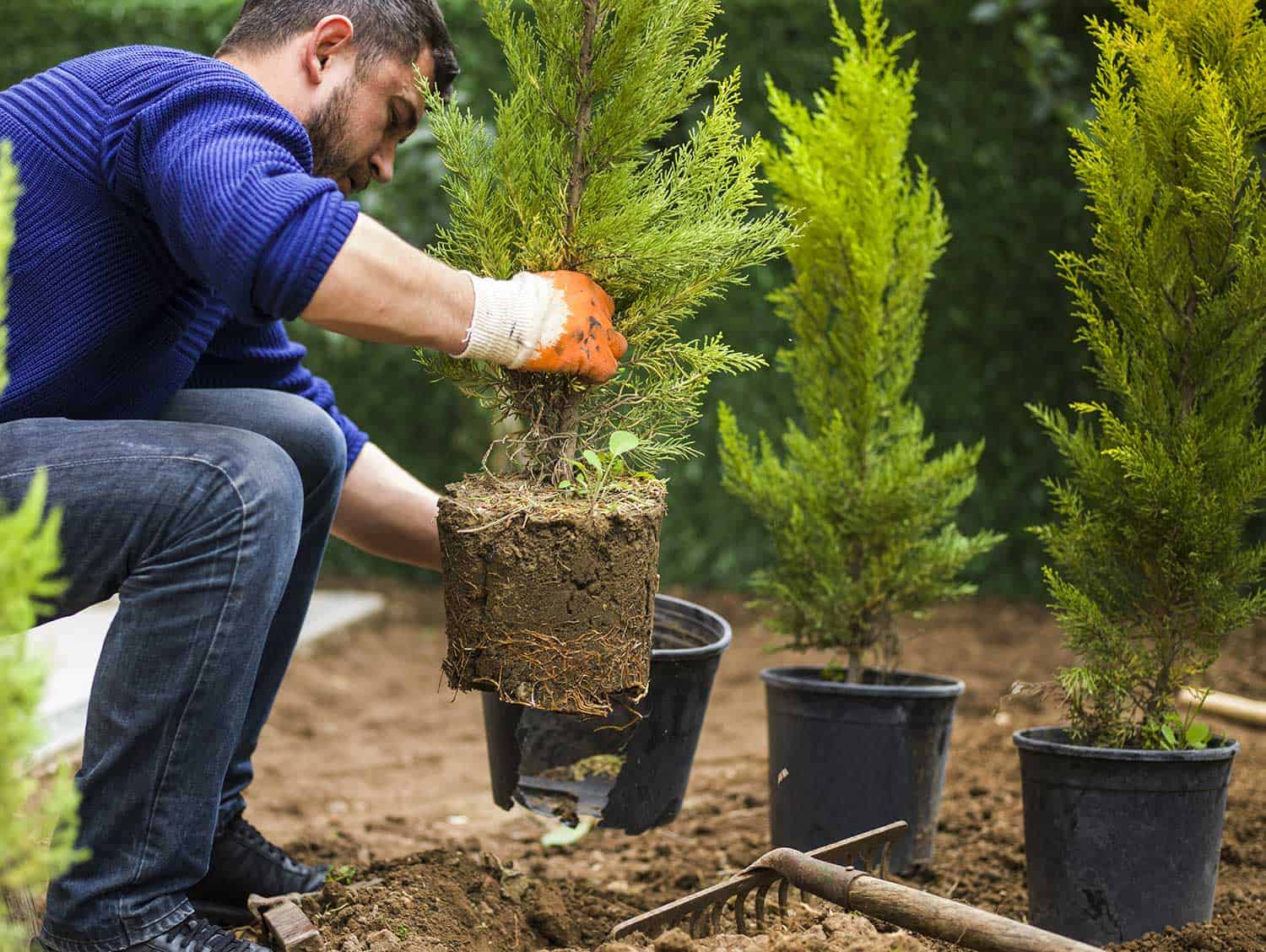
According to landscaper Steve Snedeker, front yard landscaping projects tend to be shorter in duration. Installing a driveway, a small lawn and possibly planting flower bushes, landscaping the front yard of an average home can be done within a couple of days. If removing or bringing in mature trees is included in the project, it can take longer, but even then, landscaping can be done within 3-4 days.
Snedeker mentions that landscaping for new houses tends to be faster. Removing an existing setup - especially trees - can be more time-consuming.
As for the backyard, time estimates vary. Backyards tend to be designed as part of the living space and often include elements such as decks, rockeries and water features. The duration of the work depends on the complexity of the design, and the size of the lot. As a rule of thumb, you can assume two weeks per acre of land, for a backyard landscaping project.
As mentioned, several factors contribute to the length of a landscaping project. These include:
The Amount Of Land You're Working On
Naturally, smaller projects will take less time than larger ones. If you want to landscape your front walk, for example, and find yourself working with a ten by ten patch of land, you may finish your landscaping work within three days of starting it. However, if you want to outfit your back porch to be the most gorgeous party patio on the block, then you may spend upwards of a month preparing your lot.
The Soil You Live On
The soil around your home can also make it more difficult to finish a landscaping project. Homeowners living above clay, for example, will have to spend more time preparing their land for their plants of choice.
The Plants You Want To Bring Home
However, the biggest influence on the amount of time a landscaping project takes is its design. You'll want to work on your own or with a professional ahead of time to determine what kind of design you want to implement in the space you have.
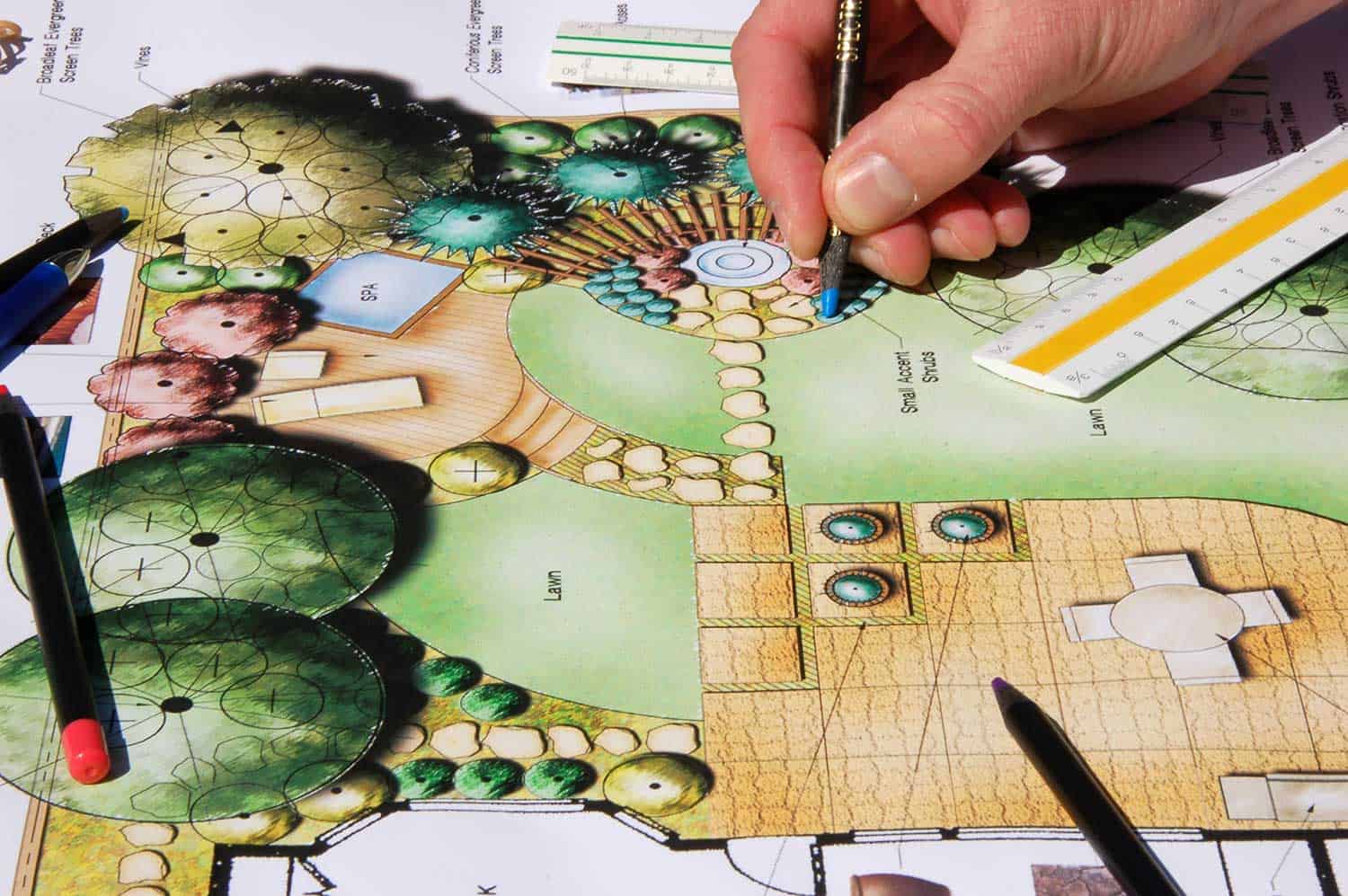
That said, you can, alternatively, fit plants onto your property wherever you like. If you're determined, however, to increase your home's property value and curbside appeal. You'll then want to apply thought to your landscaping look both from your front windows and from the road.
What Are The Basic Principles Of Landscape Design?
What goes into landscaping design? As you're bringing together the plants that you want to work with, you'll want to keep the following principles in mind:
Color
Color as a concept unites your landscaping with your home. Pick a color scheme for your landscaping with the acknowledgment that some colors - like green, for example - are unavoidable. When you think of your landscaping in terms of color, you can better match your desired flowers, bushes, and trees to features around your home, lending to the cohesive nature of the work you're about to do.
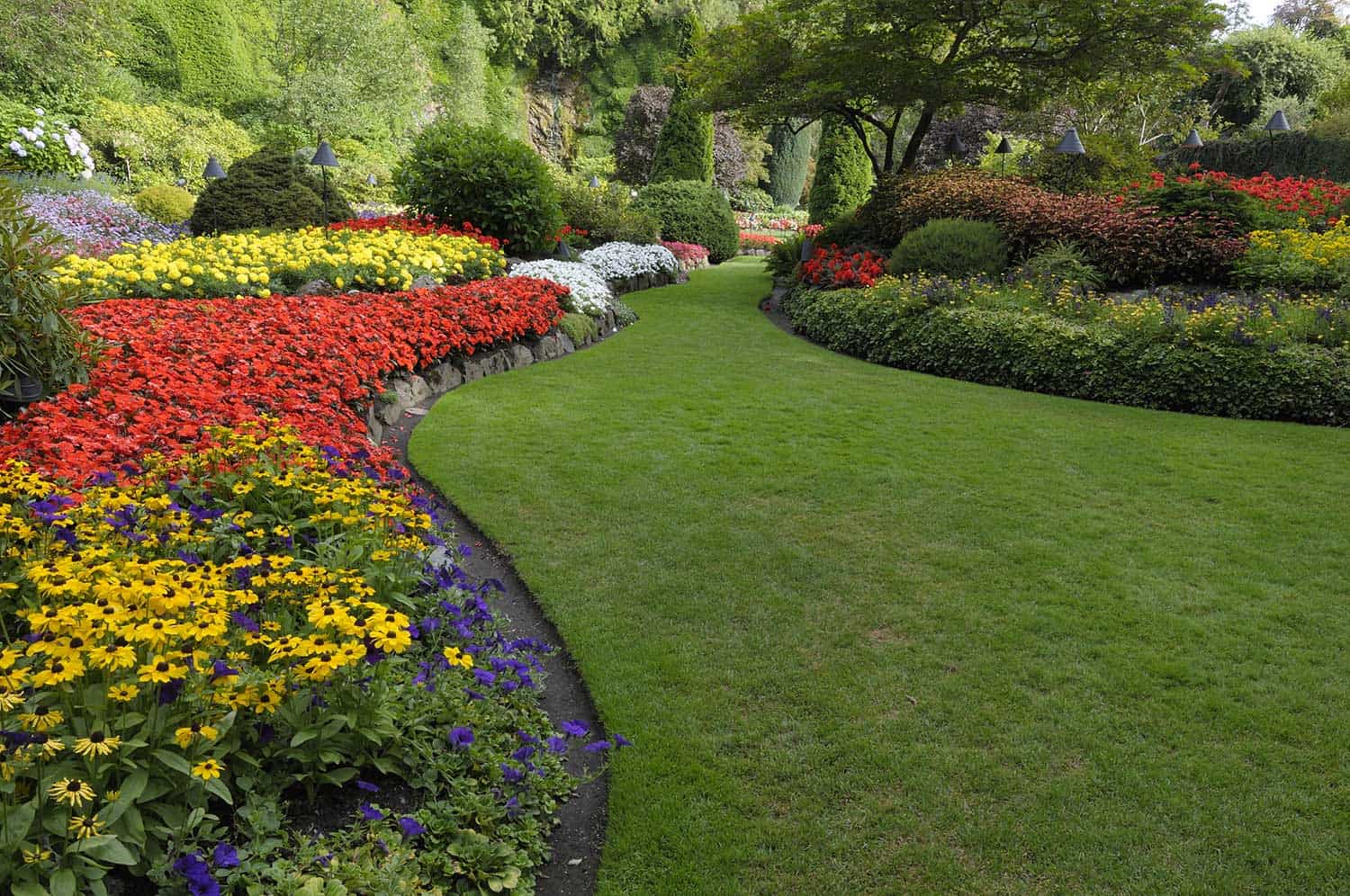
Unity
Ideally, you'll want your landscaping to appear cohesive in nature. This way, your home can resemble a completed picture instead of several features forced together by proximity.
Balance
Finding balance in your landscaping can be tricky. You'll want to decide early into your design process whether you want to embrace symmetrical or asymmetrical balance styles. Symmetrically-balanced landscaping will mirror back on itself, whereas asymmetrically-balanced work will unite similarly-colored elements without presenting an exact reflection of certain arrangements to the viewer.
Contrast
The contrast in landscaping allows you to play with size, arrangement, and color. Smaller flowers, for example, can lend to the beauty of larger bushes if contrasted appropriately. Similarly, object features grow more poignant in your lawn so long as equally large trees or bushes do not overshadow them.
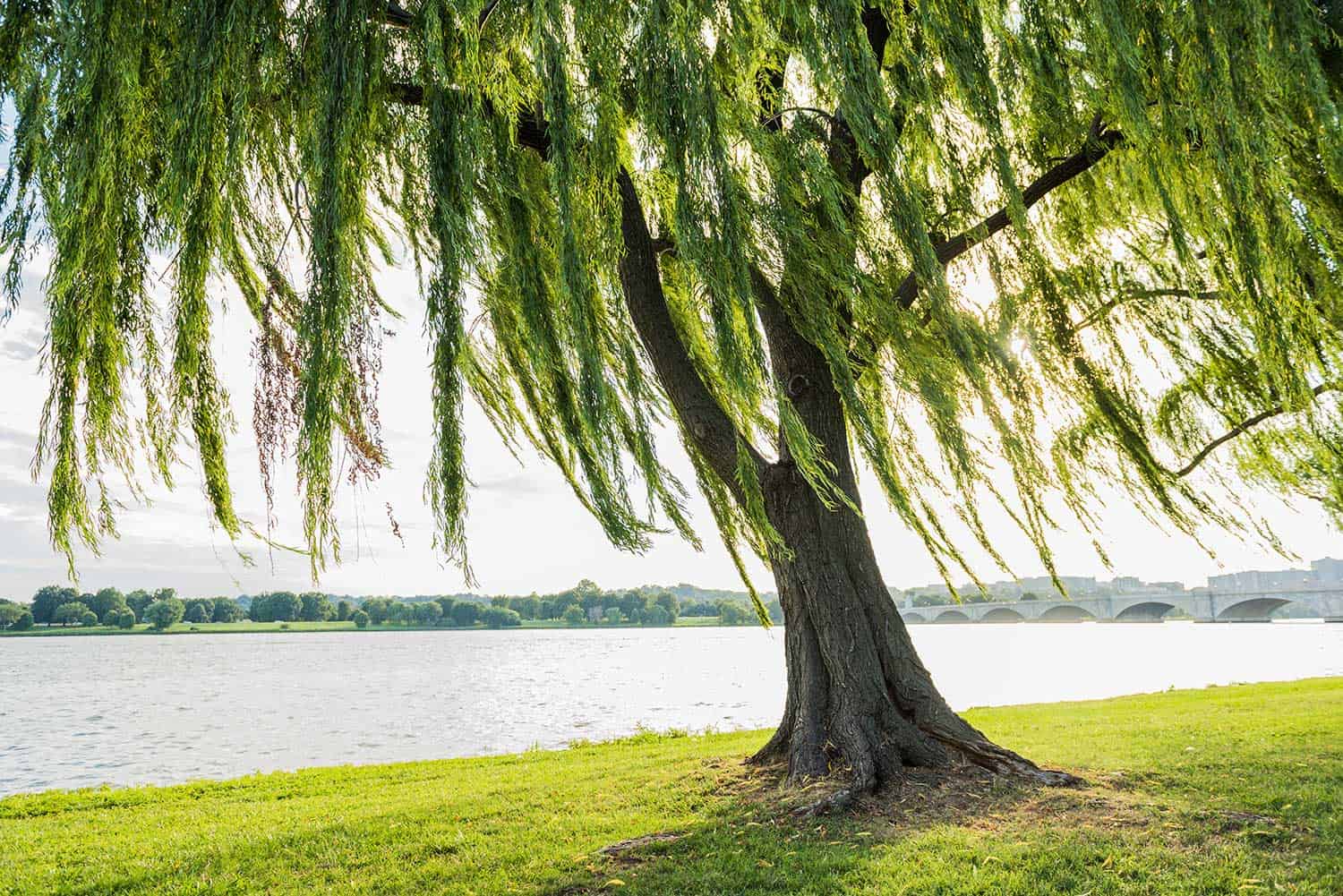
Transition
"Transition" describes the process through which your yard becomes your landscaping and vice versa. You can lend to the transition both between kept and unkempt lawn and between portions of landscaping by using the size of certain plants to your advantage. Texture also plays a role in landscaping transitions, as smoother textures can slowly give way to larger, more eye-catching plants.
Line
You're under no obligation to plant all of your bushes, flowers, or trees in a straight line. However, by taking perspectives into account as you work, you can arrange your foliage based on how onlookers might view it, embracing "the line" as you do.
Repetition
When you landscape a patch of your land, you're not just planting several different, singular plants. Don't be afraid to repeat flowers, bushes, or even trees! Repetition carries the eye through a landscaped work and lends itself to a previously-mentioned concept, landscaping unity.
How Much Should You Budget For Landscaping?
What your landscaping budget should look like is entirely up to you. Do note, though, that costs will fluctuate both based on what you'd like to see in your yard and on whether or not you opt to work with a professional at any time during the project's process.
Consider this: on average, landscaping projects can run you between $5,000 and $20,000, with projects for larger homes ranging into six-digit figures. As you're establishing your own budget, make a point to research the plants you want in your yard as well as any additional features you want to include. This way, you can establish a baseline budget before making a single purchase. With that number in place, you can start researching ways to cut costs while still achieving your dreams safely.
What Is The Cheapest Landscaping Material?
If you're trying to landscape a patch of land on a budget, you'll want to look for tricks that allow you a finished appearance at a quarter of the cost. Luckily, there are several steps you can take to avoid the more expensive landscaping options while still maintaining a professional finish.
Mulch Alternatives
Your landscaped beds will need mulch in the cooler months of the year if you want to protect your plants' roots. However, the good news is that there are plenty of mulch alternatives that you can invest in if you want to save money. Some of the most affordable mulch alternatives worth bringing home in the fall include:
- Hay or straw
- Pine needles
- Untreated newspaper
- Rubber mulch
Note that you can also gather up the leaves in your yard, run them through a woodchipper, and spread that debris across your landscaped beds.
Find other mulch alternatives on Amazon.
Vertical Versus Horizontal
If you don't have a lot of room on your property, but you still want to make an impact with your landscaping, consider investing in a vertical garden. Vertical gardens can take advantage of hydroponics to grow, helping you save money on soil, fertilizer, and even most traditional pots. Even if you want a dirt-based garden, you can bring home crawling ivies and other vertically-growing plants to add a pop of color to your home.
Add Color With Object Features
Worried that your choice of plants might leave your front walk underwhelming? You don't always have to invest in colorful plants if you want your landscaping to make an impact. Instead, you can find one or two "object features" to include amongst your plants of choice. The term "object feature" describes an object - like a birdbath, for example, or even a painted tire - that draws the eye when someone walks onto your property.
You can create an object feature yourself or find one through Amazon.
Opt For Plants With Use
You don't always landscape with utility in mind. After all, landscaping is an art. Most of the time, your goal is to ensure that your home looks appealing from the roadside or that your backyard can serve as the neighborhood's best party patio.
That said, the plants that you invest in can still do a bit of work for you. While you can plant root vegetables or berry-producing bushes for a free source of food, you can also invest in landscaping features that help you protect your foundation from water damage or that attract more honeybees to your yard.
If you're looking for plants that'll both make beautiful additions to your yard and pay their efforts forward towards your home, you can invest in:
- Shade trees - Weeping willows, red maples, and paper birches are just a few of the trees that can help protect your yard from the overwhelming heat.
- Groundcover plants - Creeping phlox, baby sun rose, and bugleherb will all help cover up patches of dirt that you would rather have hidden. Mint, too, serves as an excellent and fragrant groundcover plant but make sure to plant it in moderation, as it can spread at a terrifying rate.
- Barrier bushes - if you're looking for a little privacy, skip laurels, boxwoods, and even bamboo can add an artful fence to your side yard or front walk.
- Wildlife-friendly plants - if you want to see more wildlife in your yard, then your landscaping can help invite all manner of insects onto your property. Asters can invite butterflies up towards your windows, while Mexican bush sage can make hummingbirds a common sight during the warmer months of the year.
Invest In Affordable But Widespread Lighting
Nothing makes landscaping quite as appealing as well-placed lights. However, you don't want to blow your entire landscaping budget on outdoor lighting. That's why it's in your best interest to see what kind of wide-reaching lighting you can install outdoors.
For example, instead of opting for small pathway lights, try transforming a strand or two of affordable fairy lights into an overhead curtain. Alternatively, punctuate your outdoor landscaping with one or two elaborate lights instead of with several little ones.
Reduce, Reuse, and Recycle
It's never a bad idea to do your part for the environment. Then, as you landscape, look around your home for items that might make welcomed additions to your yard. For example, old tires often find themselves relegated to landfills, where they won't decompose for years at a time. You can use those tires instead as makeshift and creative flower pots. The same can be said for two-liter soda bottles, old kitchen appliances, and more. Embrace your inner artist and see what "junk" you can give new life to.
Can You DIY Your Landscaping?
You always have the option to DIY your landscaping. You can, of course, communicate with representatives at your local nursery if you're not sure what kind of plants or small trees you want to bring home with you. So long as you do your research ahead of time, though, and make a point of having the appropriate tools on hand, you'll be able to break earth on your landscaping project as soon as you please.
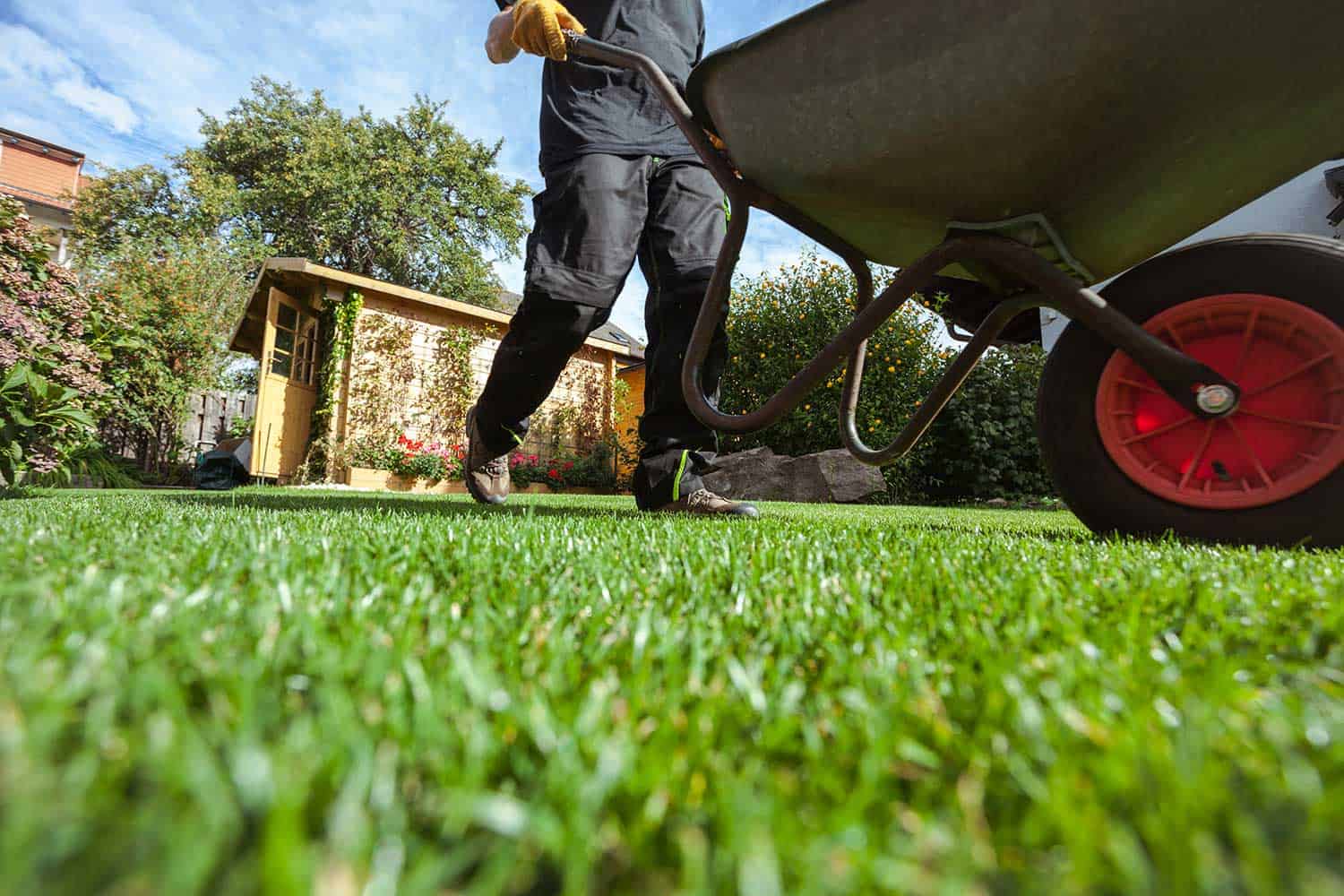
That said, do note that it may be in your best interest to work with a professional when taking on a landscaping project. Landscaping close to the perimeter of your home can put your foundation, basement, or crawl space at risk for unwanted damage. If you're working on a tight budget, too, landscaping mistakes or mishaps can be costly to contend with. Working with a professional, alternatively, places the responsibility for mistakes on attending parties while also allowing you to work within a set budget.
In short, then, it is up to you whether or not you want to DIY a landscaping project. You can if you'd like and if you enjoy getting your hands dirty. However, if you don't feel up to the task or prefer to get the input of someone with more experience, professionals are working in your area who will happily see your project through to its conclusion.
In Conclusion
As you're planning out your landscaping, remember: the size of your lot, the soil near your home, and the design you want to create will all impact the amount of time it takes for you to complete your project. Before you break ground, be sure to plan out your budget and ideal schedule so that you can keep track of your progress over time. When in doubt, you can reach out to a professional landscaper in your area for help seeing all of your landscaping dreams to fruition.


